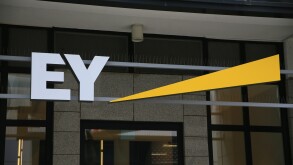
A key aspect of Spanish transfer pricing law – the secondary adjustment – will be introduced shortly. The secondary adjustment is included in Law 36/2006 for the Prevention of Tax Fraud which was passed on December 1 2006 and will be introduced in the next few months. Where there is a primary transfer pricing adjustment, the law provides for an automatic definition – for tax purposes - of the difference between the arm's length price and the price agreed between the related parties. (pictured right: Spanish prime minister Jose Luis Zapatero keenly awaiting the new rules)
The secondary adjustment will lead to a constructive dividend if the excess profit is in favour of the shareholder and a constructive equity contribution if it is in favour of the subsidiary. In both cases these consequences would be limited to the proportion of the shareholding.
The law does not resolve many uncertainties such as the issue of what the effects will be for the rest of the equity holders not affected by the primary adjustment. Furthermore, there is no reference to the cases in which the related-party transaction takes place between persons or entities whose relationship is different from that defined between the partners/shareholders or unitholders and the subsidiary (for example, between sister entities or between companies and their directors).
The now too long awaited development of the law should clarify some of the uncertainties regarding the application of the secondary adjustment, among several other crucial matters such as those in relation to the new transfer pricing documentation obligations.
However, should the final development follow the content of the last published Draft Royal Decree of July such development could create additional confusion rather than resolving the uncertainties created by the law. According to July's Draft Royal Decree the part of the constructive equity contribution that does not correspond to the holding percentage will be considered a construed taxable gift at the level of the subsidiary that will not increase the tax base of the shareholder's investment, hence creating a double taxation situation.
The commentary on paragraph 2 of article 9 of the OECD Model Tax Treaty notes that it is not the purpose of the paragraph to deal with secondary adjustments but that nothing prevents them from being made where they are permitted under the domestic laws. Therefore, when applied to cross border transactions these adjustments may easily result in double taxation provided that most countries will not grant a corresponding tax credit for the additional liability from the secondary adjustment.
In this sense, it would probably be advisable that the final decree eliminated the automatic constructive gift treatment and limited the consequences of the secondary adjustments resulting in double taxation. Such approach would be more in line with the OECD recommendation to tax administrations encouraging them to structure secondary adjustments in a way that the possibility of double taxation is minimised, except perhaps where the taxpayer's behaviour suggests the intention to illegitimately avoiding an applicable tax.
Notwithstanding, the draft decree already provides for the possibility that the excess profit was treated in a different manner to that described in its regulations, where a different cause is evidenced. Such clause may open the door to treating the excess profits as a constructive loan, the other constructive creation mentioned in the OECD Transfer Pricing Guidelines. This interpretation could facilitate the elimination of the double taxation created by the secondary adjustment for the proportion that does not correspond to the holding percentage and at least where the related transaction takes place between Spanish resident entities.
As per the case of sister companies and as it happens in some other jurisdictions, the expected development could clarify that the secondary adjustment entails construed dividends up to the chain to a common parent, followed by constructive equity contributions down to the other entity involved in the transaction.
Finally, we should also expect that some other uncertainties, such as the impact the secondary adjustment may have in other taxes, were also addressed and clarified (for example, capital tax in the case of construed equity contributions).










